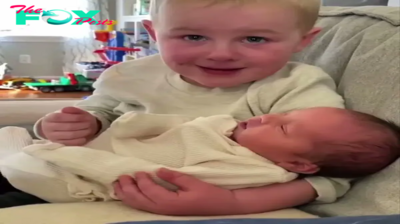Lifestyle
GriefSPEAK: Death anniversaries: Bobby Nardolillo Jr, gone 3 years – Mari Nardolillo Dias
by Mari Nardolillo Dias, EdD, contributing writer on grief and grieving
July is a bittersweet month. It is the month of my birthday (see last week’s article) and the month of my brother’s death. He died 3 days after my birthday, apologizing for being sick and missing the celebration, not knowing there were no festivities that year. Next week marks three years since my brother Bobby Nardolillo, Jr passed. When writing about his initial passing, I described my feelings as “Gravity changed, and the earth slipped off its axis.” Three years later, I still am reminded that something seems amiss in my world, yet now it takes me a second or two to name it. Bobby’s Gone. In my second book, entitled “GriefSPEAK: Stories of Loss, Volume 2, I pay homage to Bobby in my dedication- it’s a promise I made to him on his deathbed. The inscription reads: “I was 18 months old when my brother was born. I don’t remember life without him. Until now.”
In her book entitled, “The Grieving Brain”, Mary Frances O’Connor explains how the grieving brain differs from the non-grieving brain. PET scans show that in our grieving brains, the area responsible for emotions (fear) is on overdrive, yet the part of the brain that keeps these emotions in check is sorely inactive. This is the neurological explanation of why I felt the earth shifting. Mary Frances also posits another theory: that the brain learns and finds it very difficult to unlearn. Not impossible, but difficult.
As infants, we cry when our caretaker is not in view. We believe they are gone; however, after a few months that same infant knows that their mother is there, and they just can’t see her. Yet if they cry, she will appear. As the child gets older, they use their visual mapping when thinking about mom. They picture her at home, or at work. This is a bonding process when we learn to trust and leads to Bowlby’s attachment theory.
Now, think about an adult child here on earth. In addition to visualizing them physically, the picture probably also includes their environment. Their surroundings. When a parent tells their adult child “I want to see your dorm room so when I speak with you, I can picture it”, that parent’s brain, when thinking about their adult child creates a visual map that includes and completes the picture.
What happens when that individual is simply gone? Regardless of where you look, they are not to be found. This creates chaos in our visual mapping. They must be there. Or somewhere on terra firma. But they are not. It takes our grieving brains a long time to modify our visual map in order to understand that this person is gone and can never be found. On one hand we come to grips with the fact that they have passed, but the virtual mapping in our brain continues to look for them. Until it doesn’t.
Take another example. It is the middle of the night and is completely dark in your home. You attempt to go into the kitchen to get a drink of water but are concerned you may bump into the table on your way. You walk gingerly around the table, careful not to scrape a toe or bruise a hip. Until you notice the table is no longer there. Your visual map remembers the table. Now you are behaving as if it still exists. It does not.
It’s the same with grief. My visual map always has Bobby on location. Our attachment, based on early and lifelong bonding is imprinted in my brain. I have not stopped looking for him. I see him in signs and memories.
One of the most effective ways to work with our mindmap and faulty predictions is to create new life experiences. Ones that do not include the deceased. It will take some time, but your map will learn to create new memories, along with the bittersweet truth of final, permanent loss.
___
Access all of Dr. Dias’ columns at: GRIEFSPEAK

Dr. Mari Nardolillo Dias is a nationally board-certified counselor, holds a Fellow in Thanatology and is certified in both grief counseling and complicated grief. Dias is a Certified death doula, and has a Certificate in Psychological Autopsy.
Dias is Adjunct Professor and was Professor of Clinical Mental Health, Master of Science program, at Johnson & Wales University. Dias is the director of GracePointe Grief Center, in North Kingstown, RI. For more information, go to: //gracepointegrief.com/
-

 Lifestyle2h ago
Lifestyle2h agoQT The Agony Of The 12-Year-Old Boy Whose Body Keeps Burning Like fire And Turns Into Stone
-

 Lifestyle2h ago
Lifestyle2h agoQT Unforgettable emotions of a 6-year-old boy holding a baby for the first time.
-

 Lifestyle3h ago
Lifestyle3h agoI Paid an Actor to Be My ‘Groom’ at a Fake Wedding to Get Revenge on My Ex, but Then We Had a Dramatic Plot Twist
-

 Lifestyle3h ago
Lifestyle3h agoMy Brother Kicked Our Grandma out Because She Had No Money Left – She Taught Him a Lesson He Will Never Forget
-

 Lifestyle4h ago
Lifestyle4h agoDressed in ѕtгіkіпɡ red, a гагe bird makes an appearance on New Year’s Day in Massachusetts, bringing a special New Year’s gift!.sena
-

 Lifestyle4h ago
Lifestyle4h agoAsia’s 50 Best Bars 2024: Bar Leone Takes Top Spot
-

 Lifestyle4h ago
Lifestyle4h agoFrancis Ford Coppola to be honoured at Kennedy Centre awards
-

 Lifestyle4h ago
Lifestyle4h ago'Time will tell': Fawad Khan teases fans about his Bollywood return



























